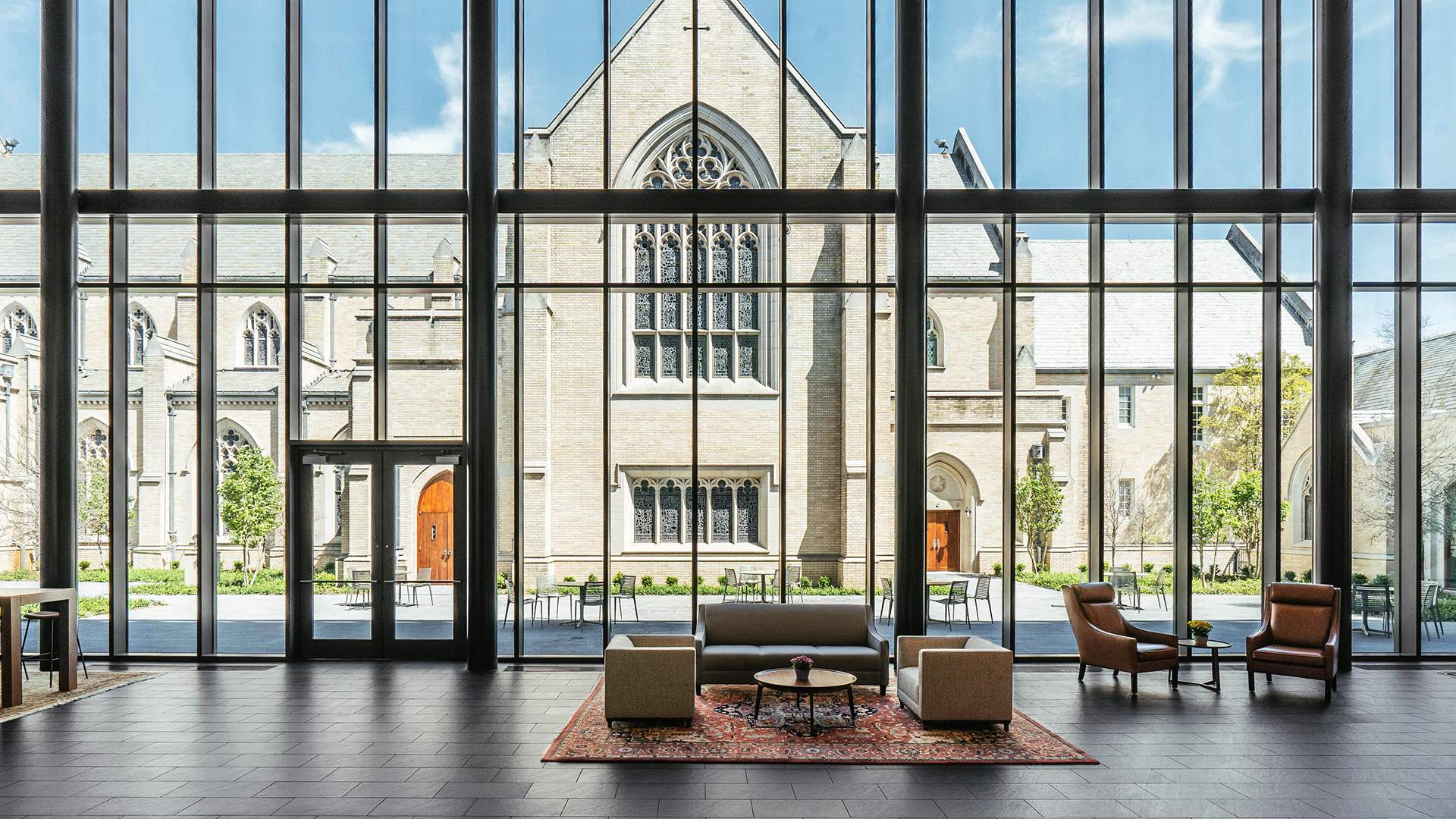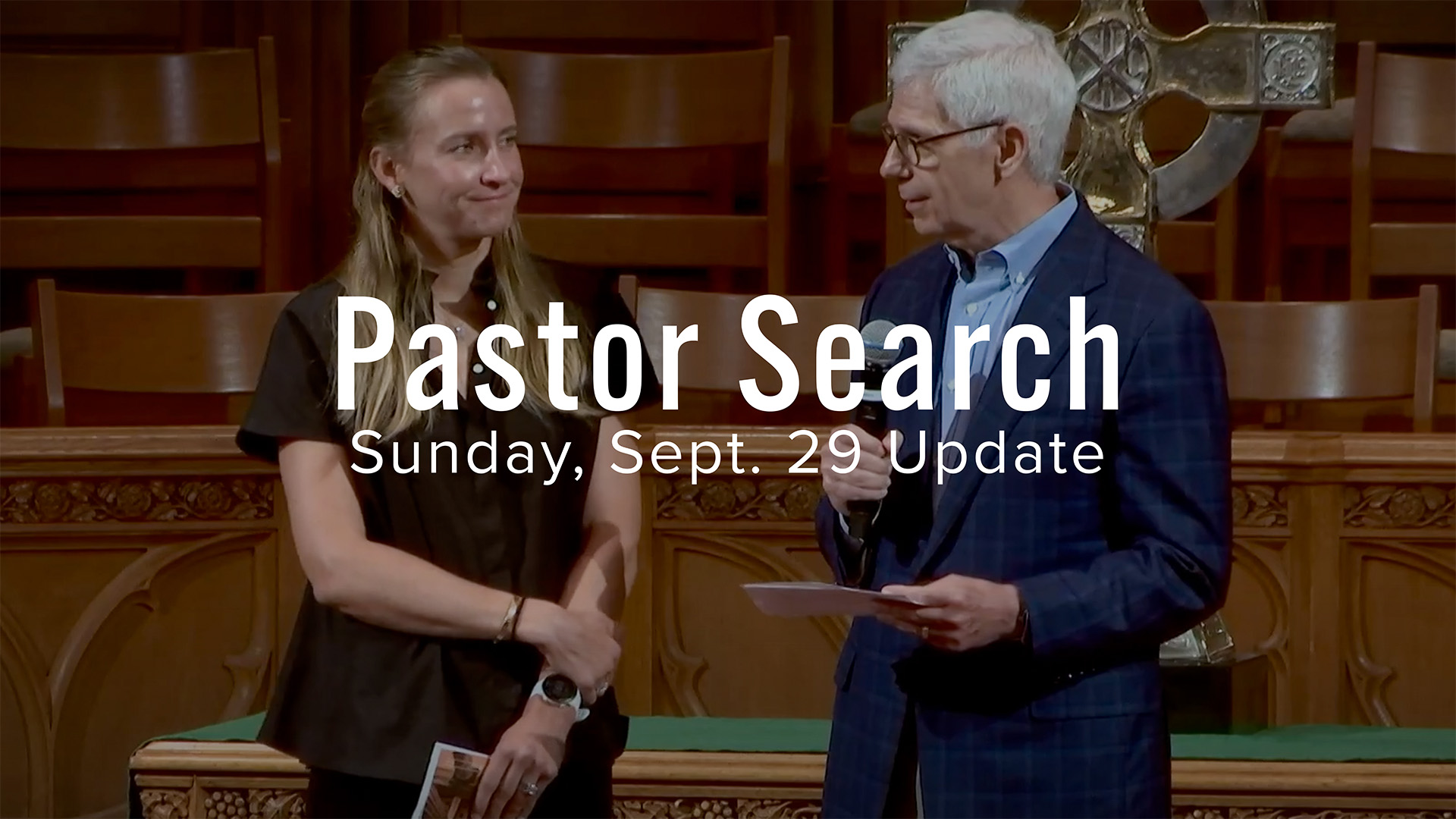
The Biblical Art of Sadao Watanabe
As part of HP Pres’ rotating art exhibit, we are featuring the biblical works of Japan’s foremost Christian artist, Sadao Watanabe (1913–1996). Watanabe converted from Buddhism to Christianity at 17 years old, and soon after started using his newfound Christian faith to preserve the traditional Japanese folk art of stencil dying. His creative and colorful works represent various scenes taken from the Bible’s Old and New Testaments, as well as from Christian calendars and Christmas cards.
Watanabe’s artwork will be on display in the Hunt Center Lobby through mid-November, with permanent installations displayed on the second floor of Hunt Center and along the north hallway connecting the Hunt Center Lobby to Alexander Hall. When you visit next, take a moment to pause and enjoy Watanabe’s beautiful depictions of Noah’s Ark, the Last Supper, and more.
More About Sadao Watanabe
 After converting to Christianity, Sadao Watanabe felt called to spread the good news to the Japanese people through using art. He said, “my task is to stand within the artistic tradition of Japan…theology will not take deep root in Japanese soil if it is merely an import.”
After converting to Christianity, Sadao Watanabe felt called to spread the good news to the Japanese people through using art. He said, “my task is to stand within the artistic tradition of Japan…theology will not take deep root in Japanese soil if it is merely an import.”
Within the framework of his Christian faith, Watanabe was able to translate biblical narratives into Japanese settings, making his artwork resonate broadly with the Japanese people. He was less concerned with representing visual reality than with finding ways to communicate his Christian beliefs to other Japanese individuals. This resulted in a beautiful body of art that is an expression of his deep faith in Jesus.
His prints are an invaluable contribution to Christian art and are part of many international collections including the Vatican Museum, National Galleries in Washington, DC and London, the Metropolitan Museum of Art in New York, the Museum of Fine Arts in Boston, and the National Museum of Modern Art in Tokyo.
On Display in Hunt Center Lobby: Left of Cross
Top Row (left to right):
- Noah’s Ark (1979): God saw the corruption of the earth and decided to destroy it by a great flood. He chose Noah, a man of blameless piety, to save the human race.
- The Annunciation (1972): depiction of the angel Gabriel announcing to the Virgin Mary that she would conceive a son by the power of the Holy Spirit, to be called Jesus.
- The Nativity (1963): remembering the time when Mary and Joseph traveled to Bethlehem from Nazarath and all of the inns were full, but one inn owner allowed them to stay in his stable. That night Jesus was born.
Middle Row (left to right):
- Moses in Bullrushes (1979): a disturbed duck flies out of the bulrushes by the Nile.
- The Angel & the Shepherds (1971): the angels appear to shepherds watching their herds to tell them the good news about the birth of Jesus, the long-awaited savior.
- The Three Wisemen Sailing for Home (1972): The three wisemen represent wisdom and authority. In this pieces, Watanabe depicts the three wisemen sailing the sea in search for baby Jesus.
Bottom Row (left to right):
- Cain and Abel (1975): Cain and Abel were the first two sons of Adam and Eve. Cain, the firstborn, was a farmer, and his brother, Abel, was a shepherd. The brothers both made sacrifices to God, but God favored Abel’s sacrifice, so Cain murdered him. God punished Cain by condemning him to a life of wandering.
- Christmas Cards
On Display in Hunt Center Lobby: Right of Cross
Top Row (left to right):
- The Last Supper (1966): Jesus shared his final meal with the disciples on the night before he was arrested. After the meal, Jesus was betrayed, arrested, tried, and then crucified.
- Descent from the Cross (1973): Christ’s body is removed from the cross to be taken away for burial.
- Christ at Emmaus (1971): two disciples traveled to Emmaus and, without recognizing him as the resurrected Lord, spoke with him along the way, Jesus later appeared to his apostles and others and commissioned them to preach repentance and be witness of him.
- Jesus Washes Peter’s Feet (1987): before the Last Supper, Jesus poured water into a basin and began to wash the feet of the disciples, showing the way to live by serving others in the name of the Lord.
Middle Row (left to right):
- The Flight to Egypt (1987): Joseph was warned in a dream that Herod was intent on killing the baby Jesus, so he took Mary and the baby to Egypt for safety.
- The Triumphal Entry (1973): a beautiful rendering of Christ’s entry into Jerusalem. Christ, large and centered in the composition, is depicted with wide open eyes, as if sensing the fateful moment that foreshadows the Passion.
- Peter’s Denial (1959): during the last supper with the disciples, Jesus predicted that Peter would deny knowledge of him, stating that Peter would disown him before the rooster crowd the next morning.
- Well in Samaria (1970): a woman of low standing in Samaria goes to the well for water and is surprised to encounter Jesus who engages her in conversation and treats her as an equal. Filled with his acceptance, she helps others believe in Jesus and his calling to treat all our enemies with love.
- The Boat in the Storm (1967): a great storm arises and the Lord calms the sea, to the amazement of the disciples who had been reluctant to trust him. From this experience, they learn how the power of Jesus can calm the storms in their lives.
Bottom Row (left to right):
- Presentation in the Temple (1982): Mary and Joseph took the Infant Jesus to the Temple in Jerusalem forty days after his birth to complete Mary’s ritual purification after childbirth.
- Jesus Teaching the Elders (1965): Jesus, holding a scroll, is surrounded by six elders in the temple.
- Baptism of Jesus (1973): Jesus’ baptism by John was an act of humility. In his baptism, he consented to be counted as if he were a sinner, just like everyone else. This act foreshadows his death on the cross of the sins of the people of Israel.
- The Good Shepherd (1968): a shepherd leaves his flock of 99 sheep to find one which is lost. A shepherd will “lay down his life for his sheep,” exactly what Jesus did for us on the cross.
- Christ Carrying the Cross (1994): after being sentenced to death, Christ was ordered to carry his own cross to the hill outside of Jerusalem where he would be crucified.
- The Crucifixion (1976): the central pillars of Christianity originate from the story of the trial, crucifixion, and death of Jesus. The events cover a time when Jesus and his followers entered Jerusalem for the festival of Passover.
- The Risen Christ (1979): Jesus was raised from the dead and is now with God in heaven, overcoming death so that those who believe in him will have eternal life.
- Pentecost (1965): Pentecost commemorates the descent of the Holy Spirit on the disciples following the Crucifixion, Resurrection, and Ascension of Jesus. It reminds Christians that even though Christ died for our sins, we have to receive the Holy Spirit so that we can perform the work of discipleship.
Lower Two (left to right):
- Miraculous Draught of Fish (1968): Jesus meets his disciples the morning after a night of futile fishing when both nets and hearts were empty. Jesus produces abundance of fish, proving that his presence and his provision for his followers are constant.
- The Good Samaritan (1972): Jesus used the parable of the Good Samaritan as an example of loving those who may not be our friends. Watanabe captured this parable in (found in Luke 10:25-37, to depict an image of people loving everyone, including their enemies.



